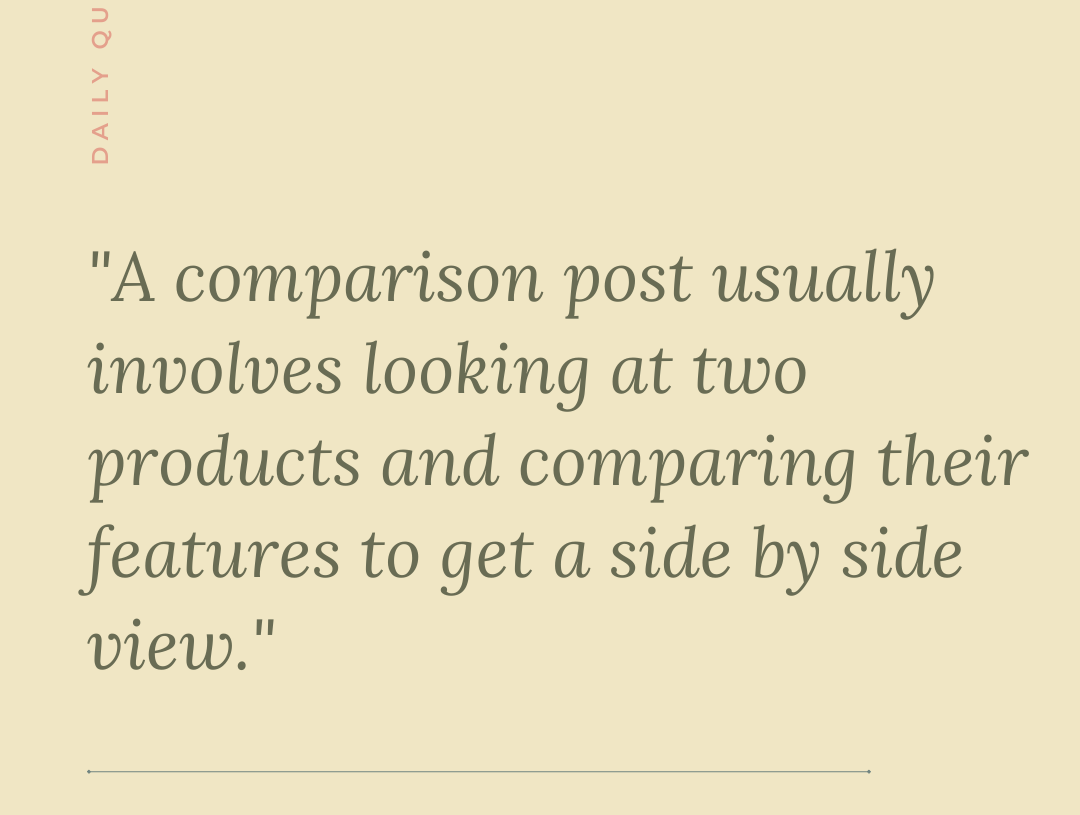The best product comparison articles are the ones that take a comprehensive approach to look at both products. This includes looking at features and benefits, writing about pros and cons, as well as reviewing reviews from third-party sites like Amazon or other review sites. In this blog post, we will show you how to write a product comparison article that is sure to help your business generate more revenue!
What is a product comparison?
A product comparison falls somewhere in the middle of the funnel and of the types of product review. A single product review is an in-depth look at one product. A roundup review might look at five, ten or more items in basic detail.
A comparison post usually involves looking at two products and comparing their features to get a side by side view. It is for people who have done some research and know what they want but have a few ideas to decide between.
You’ll often see keywords with ‘vs’ or ‘versus’ in the title. Things like ‘ConvertKit versus MailChimp’ or Instant Pot vs Ninja Foodie’ are the kind of keywords you can focus on for these blog posts.
How to research a product comparison article
There are a few ways you can do some research on products to get ideas for a comparison article.
If you have used one or both of the products or items yourself, you can write your own opinions. This can still work if you have only used one but make it clear in the post that you have experience of one but have extensively researched the other.
Check the popularity of each product by looking at things like comments, reviews and shares on social media. While there isn’t a hard number to look for, if one product is being talked about much more than others it would be worth matching them up against other similar products in your post because people are interested in that brand or item.
Look at sites like Amazon or third-party review sites to see what people have said about the products. This will give you an idea of how popular it is from other people’s points of view and what they thought about it overall.
Compare features and benefits. You should look at things like size, style, performance or anything else that would make them different from each other. Think about which one matches up better for your needs or what you think your audience is looking for.
Writing the comparison article
There’s no right or wrong way to write the article but there are a few important things you want to include:
- A bullet point list of the main features of each product
- An intro to the product, who makes it or where it comes from and what it is primarily used for
- An idea about the cost if possible (although be careful of this if you are reviewing Amazon products as they don’t like you to add prices).
You will also want to talk about the pros and cons of each product. Tables or boxes containing this information can help with that at-a-glance factor for people who are skimming for highlights.
If you need to compare a few different products, then look for their differences in features as well as talking about how they might match up with your audience’s needs better than others.
Getting images
It is always great to have images to go with reviews. For products, you own, try to grab a photo or two, even if they aren’t professional level. This shows you do have the item and helps add authenticity.
If you don’t own the item but are an affiliate for a site selling it, you can probably use their images. Always check the terms and conditions on the site. For instance, with Amazon, you can use the HTML code for the image but can’t save it and upload it that way.
You could even reach out to the manufacturer and ask if you could use photos in your review from their website.
Finally, for something like software that you can’t photograph, use screenshots. Try to illustrate key points or things you have talked about in the article. You can even annotate them in something like Canva to make them more personal.
Summing it up
Once you have gone through all the benefits and features, it is time to give a conclusion. It is okay to give your opinion as that’s what your reader wants. But make sure you back it up with facts, not just ‘I like this one best’ because people want to know WHY you like it best more than anything!

